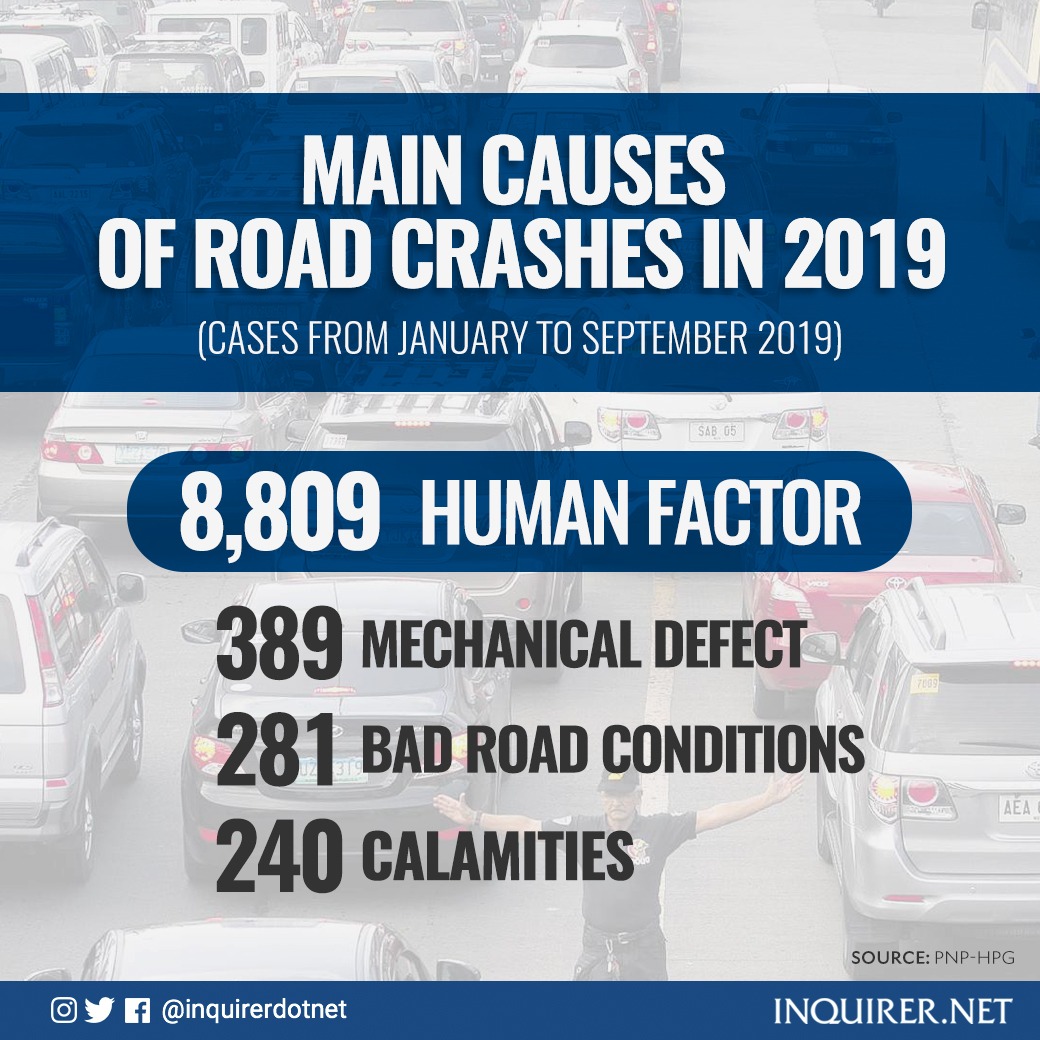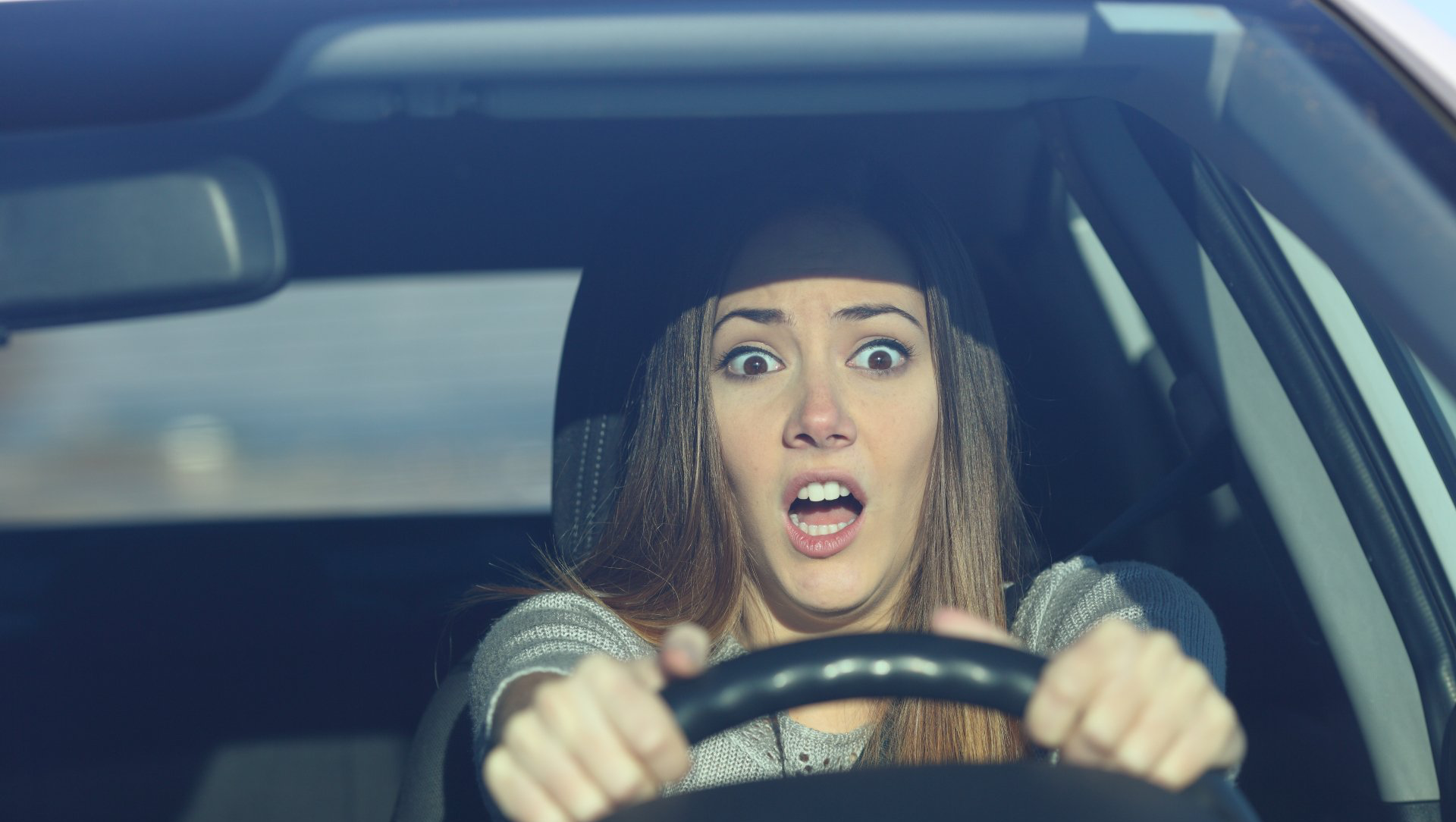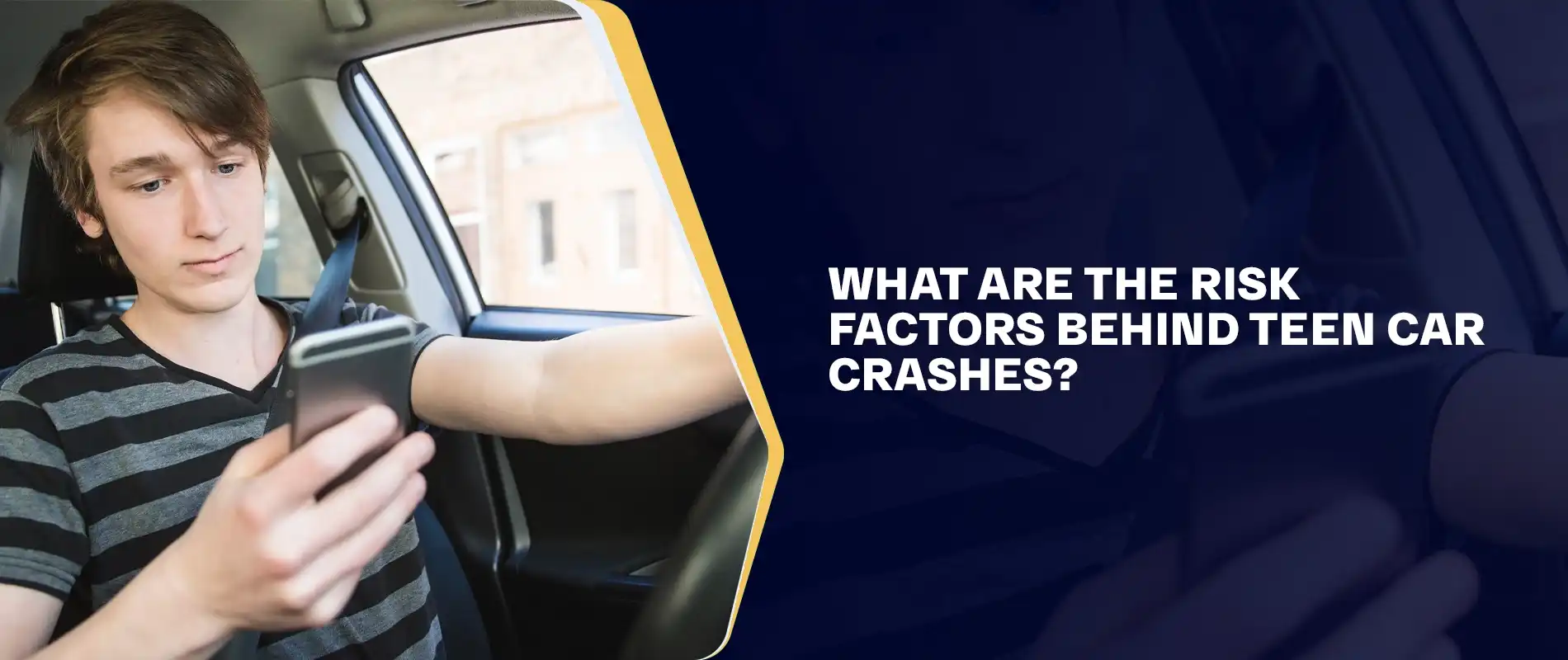When we think about young people getting behind the wheel, it is pretty common to feel a mix of excitement for them and a little bit of worry, too. For many families, that first driver's license feels like a huge step towards growing up and having more freedom. Yet, for all the joy and independence that comes with driving, there is also a serious side to consider: the very real risks that young drivers face on the roads. So, what is it that makes this time particularly tricky for them, and why do we hear so much about accidents involving teens?
It turns out that figuring out the main reasons for these road incidents is not a simple task. There are, you know, quite a few things that come together to create a situation where a young person might be more likely to have a car accident. It is not just one big thing, but rather a collection of smaller challenges that, when combined, can make driving a bit more dangerous for those who are still learning the ropes. We often hear about how inexperience plays a part, and that is definitely true, but it is far from the whole picture.
Actually, when we look a little closer, we see that it involves everything from how young brains are still developing to the kinds of situations teens often find themselves in, as a matter of fact. We are going to explore some of these key elements that contribute to why teen car crashes happen, giving you a clearer idea of what is really going on out there. It is about more than just knowing how to steer; it is about judgment, attention, and a whole lot of other factors that come into play.
Table of Contents
- What Makes Teen Driving Different?
- Are Distractions Really a Big Deal for Teen Car Crashes?
- What About the Time of Day for Teen Car Crashes?
- How Can We Help Prevent Teen Car Crashes?
- A Look Back at What Causes Teen Car Crashes
What Makes Teen Driving Different?
You know, it is fair to wonder why young drivers seem to have more trouble on the road than older folks. It is not just about being new to something, though that is a big part of it, to be honest. There are some specific things about being a teenager that make the whole driving experience a bit more complicated. For one, their brains are still, you know, getting themselves sorted out, especially the parts that help with making good choices and thinking about what might happen next. This means that sometimes, a quick decision in a car might not be the very best one.
Then there is the matter of experience itself. When you are just starting out, every single situation on the road is kind of new. You have not seen it all before, so you might not react as quickly or as smoothly as someone who has been driving for years. It is like learning any new skill; you get better with practice, and that practice takes time. So, for teens, every drive is a chance to learn, but it also carries a higher chance of something going wrong because they are still figuring things out.
Also, young people tend to be, well, a little more prone to taking chances. This is not just in driving, but in many parts of their lives. That desire for excitement or to show off can lead to some risky moves when they are behind the wheel, which, as you can imagine, does not mix well with the serious business of driving. It is a combination of a developing brain, a lack of on-road time, and a natural tendency towards thrill-seeking that sets them apart from the average driver.
Just Starting Out - The Inexperience Factor for Teen Car Crashes
When someone first gets their driver's permit, they are, basically, just beginning their journey as a driver. They might know the rules from a book, but putting those rules into practice on a busy street is a whole different ballgame. They have not had the chance to experience all sorts of weather conditions, like heavy rain or snow, or to deal with unexpected things, such as a sudden stop in front of them or another car doing something unpredictable. This lack of practical time behind the wheel means their reactions might be slower, or they might not even notice a potential problem until it is too late. It is a bit like trying to play a sport without having practiced much; you know the rules, but your body just does not move as smoothly yet.
This inexperience also means that young drivers often have trouble judging distances and speeds, which is, you know, a pretty big deal when you are trying to avoid hitting something or someone. They might not realize how long it truly takes to stop a car at a certain speed, or how fast another car is actually coming towards them. This can lead to following too closely or pulling out into traffic when there is not enough room. So, really, it is not just about knowing the basics, but about having that instinct that only comes from many hours of driving in various situations. That, you know, just takes time.
Another part of this learning curve is that new drivers often struggle with handling more than one thing at a time while driving. Imagine trying to keep track of your speed, the cars around you, the traffic lights, and maybe even a passenger talking to you, all at once. For an experienced driver, this is second nature, but for someone new, it can be, you know, quite a lot to manage. This can lead to them getting overwhelmed and missing important cues on the road, which, honestly, can be a major contributor to teen car crashes.
The Thrill Seekers - Risk-Taking and Teen Car Crashes
It is pretty common knowledge that teenagers, in general, are more inclined to take chances. This tendency to, you know, push boundaries does not magically disappear when they get into a car. In fact, it can become even more pronounced. This might show up as speeding, going much faster than the speed limit or what is safe for the conditions. It could also mean making sudden lane changes, trying to beat a yellow light, or driving too close to the car in front of them. These actions are, basically, like inviting trouble on the road, and they raise the chances of an accident quite a bit.
Sometimes, this risk-taking comes from a desire to impress friends or, you know, just feel a bit of excitement. Peer pressure can play a really big part here. If their friends in the car are encouraging them to drive faster or do something daring, a young driver might give in, even if they know it is not a good idea. This need to fit in or be seen as "cool" can override their better judgment, leading to dangerous situations that could easily result in a crash. It is a tough spot for them to be in, honestly, when their friends are pushing them to do something risky.
Moreover, young people might not fully grasp the severe outcomes of their actions. They might think they are, you know, good enough to handle the extra speed or the close call, without truly understanding just how quickly things can go wrong. This feeling of being, well, kind of invincible is a common trait in adolescence, and it can lead to them underestimating the dangers of driving recklessly. So, while they might feel like they are just having fun, they are actually putting themselves and everyone else on the road in a very risky spot, which is a major factor in many teen car crashes.
Are Distractions Really a Big Deal for Teen Car Crashes?
You might wonder if all the talk about distractions is really that important when it comes to young drivers. And the honest answer is, yes, they are a very, very big deal. For anyone driving, taking your eyes or your mind off the road, even for a second, can have serious consequences. But for teens, who are already dealing with less experience and a tendency towards risk, distractions become even more dangerous. It is like trying to learn to juggle while someone is throwing extra balls at you; it just makes it so much harder.
Think about it: a new driver is still trying to get the hang of basic driving tasks. They are still figuring out how to manage the vehicle, pay attention to traffic signs, and react to other cars. When you add in something that takes their focus away, like a phone buzzing or friends chatting loudly, it becomes incredibly difficult for them to process all the necessary information for safe driving. Their brains are, you know, just not as good at multitasking behind the wheel as an experienced driver's might be, and that is a key difference.
So, yes, whether it is a quick glance at a phone screen or a lively conversation with passengers, these moments of distraction are not just minor annoyances. They are, actually, critical factors that can lead to a young driver missing something vital on the road, like a car slowing down ahead or a pedestrian stepping out. These missed cues are often the direct cause of many unfortunate incidents, contributing significantly to teen car crashes.
Phones and Friends - Common Distractions in Teen Car Crashes
It is pretty clear that phones are a huge part of, you know, most people's lives these days, and teens are no exception. But when you are driving, a phone can be a truly dangerous item. Just a quick check of a text message, or looking at a notification, takes your eyes off the road for a few seconds. At highway speeds, those few seconds mean you can travel the length of a football field without looking where you are going. That is, basically, like driving blind, and it is a prime reason for many teen car crashes. It is not just texting either; even talking on the phone, hands-free or not, can take your mind off the driving task.
And then there are the passengers. While having friends in the car can be fun, it also adds a whole new level of potential distraction for a young driver. Laughter, conversations, music choices, or even just the presence of other young people can pull a driver's attention away from the road. The more friends in the car, the higher the risk, as a matter of fact. It is not that friends are bad, but for a new driver, that extra noise and activity can be overwhelming and make it harder to concentrate on the very serious job of driving safely.
These kinds of distractions, whether from a device or from the people in the car, are, honestly, particularly challenging for young drivers because their brains are still learning how to manage multiple things at once. They might not have the ability to quickly switch their focus back to the road after being distracted, or to filter out the background noise. So, limiting these kinds of distractions is one of the most important things a young driver can do to stay safe and help avoid becoming part of the statistics for teen car crashes.
What About the Time of Day for Teen Car Crashes?
You might not think much about it, but the time of day, or night, can make a really big difference in how safe driving is, especially for young people. It is not just about how much light there is; it is also about what else is happening on the roads during certain hours. For instance, driving late at night brings its own set of unique challenges that can be particularly tough for someone who is still new to being behind the wheel. So, it is worth asking, does the clock play a role in what causes teen car crashes? The answer, as it happens, is yes, it absolutely does.
When the sun goes down, visibility drops, which is, you know, pretty obvious. But it is more than just seeing less. Your eyes work differently in the dark, and it can be harder to spot things like pedestrians, animals, or even road hazards. For a young driver who is still getting used to reading the road, this reduced visibility adds another layer of difficulty. They might not react as quickly to something they barely see, which can lead to trouble. It is a very different driving experience than in broad daylight, and it requires a different set of skills that new drivers might not have fully developed yet.
Also, the roads can be a bit different at night. There might be fewer cars, which could lead to a false sense of security and perhaps a tendency to drive faster. Or, conversely, there might be more drivers who are tired or, in some cases, impaired. These factors combine to create a driving environment that is less forgiving for someone with less experience. So, the time on the clock is, honestly, a significant element in understanding why some teen car crashes occur.
Driving After Dark - A Challenge for Teen Car Crashes
Driving when it is dark out presents some pretty specific challenges for anyone, but especially for young drivers who are still gaining experience. For one thing, your field of vision gets much smaller. You can only see what your headlights light up, which means you have less time to spot potential problems and react to them. This is, you know, a major hurdle for someone who is still learning to anticipate what might happen on the road. It is a bit like trying to solve a puzzle with only half the pieces available to you.
Then there is the issue of fatigue. Teens often have busy schedules, with school, sports, and social activities. Driving late at night, after a long day, can mean they are tired, even if they do not fully realize it. Drowsiness can slow down reaction times just as much as, or even more than, some other impairments. A tired driver might miss a stop sign, drift out of their lane, or simply not react quickly enough to a sudden situation. This lack of alertness is, honestly, a silent but very real contributor to teen car crashes, particularly during those late hours.
Furthermore, night driving often involves less traffic, which can sometimes make young drivers feel a bit too comfortable. They might be tempted to speed or take more risks because the roads seem empty. However, the dangers are still there, perhaps even more so with reduced visibility and the potential for other drivers who are also fatigued or impaired. So, the combination of limited vision, potential tiredness, and a false sense of security makes driving after dark a particularly risky time for teen car crashes.
How Can We Help Prevent Teen Car Crashes?
Given all these things that can make driving tricky for young people, you might be asking, what can we actually do to help keep them safer? It is not about stopping them from driving, of course, because that is a big part of growing up. Instead, it is about giving them the right tools, the right guidance, and the right environment to learn and practice safely. There are, you know, some really practical steps that parents, guardians, and even the young drivers themselves can take to bring down the risks. It is about being proactive and thoughtful, really.
Related Resources:



Detail Author:
- Name : Linnea Grant Sr.
- Username : lilliana57
- Email : isaias.okuneva@barton.com
- Birthdate : 1979-08-21
- Address : 33560 Autumn Oval Apt. 036 South Isabellefurt, MS 56898
- Phone : 949-359-6866
- Company : Gislason LLC
- Job : Diagnostic Medical Sonographer
- Bio : Quia alias quis enim. Eligendi ex fugiat quia dolore et quas tempora. Voluptatibus illum voluptatem nihil. Fuga repellat fugiat aut voluptatem aut.
Socials
instagram:
- url : https://instagram.com/herzog1999
- username : herzog1999
- bio : Maxime sed odit in possimus. Voluptatem dolores beatae debitis at.
- followers : 1600
- following : 195
linkedin:
- url : https://linkedin.com/in/herzog1976
- username : herzog1976
- bio : Nihil enim laudantium inventore.
- followers : 3667
- following : 814
twitter:
- url : https://twitter.com/holden.herzog
- username : holden.herzog
- bio : Neque qui laborum et et. Qui impedit cum deleniti. Expedita autem fuga quis vel labore enim. Consequatur et quaerat nemo aut officiis.
- followers : 5551
- following : 2131
facebook:
- url : https://facebook.com/hherzog
- username : hherzog
- bio : Rerum dolores recusandae inventore magni fuga possimus sunt.
- followers : 3896
- following : 1099